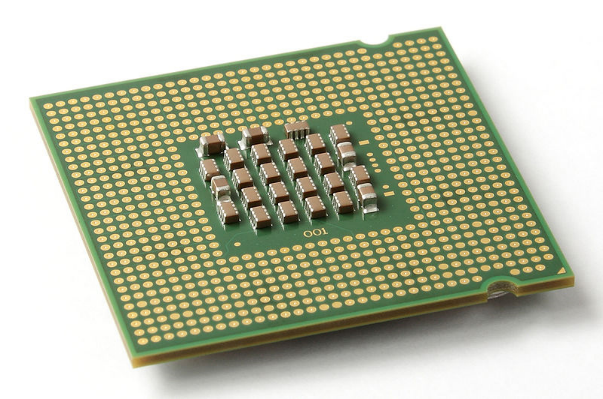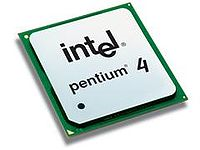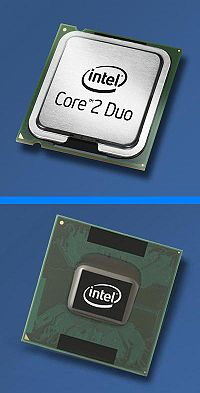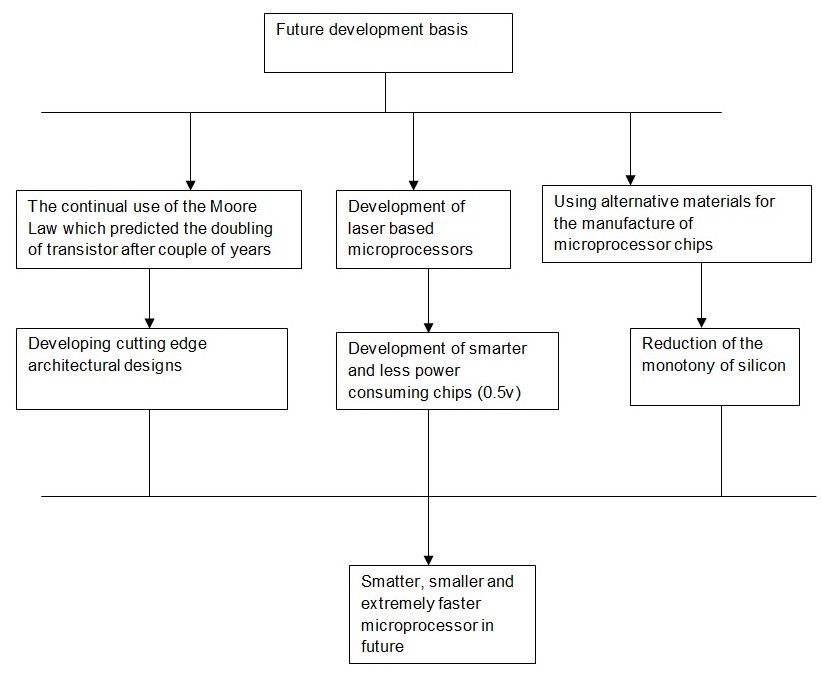Introduction
The world of computing has been the most dynamic revolution in the recent times; it has attracted a number of microchip manufactures to come up with the most sophisticated Integrated Circuitry ever witnessed in the world. With increase in the number of computer users, there has been a great need for the computer to have better specifications that can improve the speed of computing through the multitasking process. There are two fundamental and integral parts of a computer that have revolutionized the computing speed in the world of computers. These two components of a computer are the Read Only Memory (RAM) and the microprocessor microchip. Their improvements have been the hub of the revolution in the ever increasing computer speed that has been witnessed. The improvement of the processor has showed distinct phases and models of computer change in a span of 10 to 20 years.
Brief description
According to Anand (2000) it is obvious to mention Intel when one is referring to processors, Intel manufactures have been the most revolutionary in the world of microchip responsible for the manufacture of the microprocessors. Despite the competition from other chip manufacturers such as AMD Athlon, Intel has proven with time their superiority in chip manufacturing. This paper is going to concentrate on the Intel Pentium 4 research based on the existing data and future expectation from the Intel Company. Pentium 4 was released in the later months of the year 2000 as a replacer of Pentium III, in essence Pentium 4 is seventh in according to Intel’s generation since x86 foundational architectural microprocessor. Pentium 4 unlike its predecessors, had an advanced clock speeds coupled with SSE which increased its processing speed and hence advanced computing. When closely compared to its predecessor, Pentium 4 has a relatively lower processing per cycle. The idea behind reducing the number of processing per cycle was essentially to gain more per second cycles, this means that the chip had a higher clock speed and better frequency that the former.
A typical P4 processors range from Celeron model which are in the bottom list of the Intel chips to Xeon model with advanced SMP settings. The Celeron processors are much cheaper than the other advanced Xeon based processors in the market. The evolution of the microprocessor has however not gone to Pentium 5 as widely expected, instead Intel microprocessors have revolutionised their processing speed from 1.4GHz, 1.5 GHz, 2.0 GHz, 2.2 GHZ, 2.6GHz, 2.8 GHz to even higher than 3.0 GHz. The P4 microprocessor is either pin or pin less depending on the motherboard. A P4 microprocessor will look like the picture below.

From the outside the P4 microprocessor will look like the picture below;

Willamette based cores
Willamette based processor was the initial microprocessor from Intel, despite the delays experienced in the release of this microchip to the market, its release provided paramount especially with regard to the company’s competitor Thunderbird which was at this time doing better that the Intel P-III. The initial processors speed was on a range of 1. 3 to 1.5 GHz. The core of the Willamette processors was of about 0.18 µM. This model of the Intel chip was disappointing because it failed to surpass the AMD lower model Duron and its predecessor Pentium III. The introduction of the Intel P4 1.7 version in 2001 proved more superior than its predecessors with a higher computing speed. The later introduction of the 2.0GHz processor to the market proved its superiority in the X86 processing unit in the market, this challenged Athlon Thunderbird. The Intel Company regained its fame and superiority over other AMD Athlon by these revolutionised computing systems (David, 2003).
Northwood based cores
The Northwood based core was another revolution of the Intel chips, its range was 2.0 to 2.2 GHz speed. This was an increased per cycle revolutions from the previous Willamette chip. This achievement was a milestone to Intel P4’s microprocessors. The use of the 0.13 µM by Intel made it possible for them to manufacturer better microprocessors with a speed of up to 2.8 GHz. This increase in clock speed made Intel the chips unquestionably the fastest microprocessors in market.
The ground breaking revolution of the Intel chips was yet to come, the 3.0 GHz with hyper-thread (Xeon) enabled the operating system to operate with two logical processors, this in essence made the loading of the operating system twice as fast as it was initially. The bus speed of the Hyper-Thread in the range of 2.4 to 3.0 GHz was 800MHz. These editions of the Intel chips enabled it to easily surpass other competitors in the market by the end of 2004.
Extreme edition
The extreme edition of the Intel microprocessors was launched after a forum in 2003. The improvements that were relevant in the Microprocessor chips were the increase in the cache level 3 by about 2 MB. This improvement was made specifically for the games applications. Chris, L. (2008) emphasised that the speed of the extreme edition was somewhat lower than the Northwood based cores as a result of the increased L 3 cache. The multimedia industries benefited from this chip’s increased level 3 cache.
Prescott core
According to Glaskowsky, and Peter N, (2004) Intel introduced Prescott core which used 90 nm, it was one major reformation of the architectural basis of the Pentium 4. The Northwood is however faster than the Prescott. The difference between Northwood and Prescott is the fact that Prescott runs at a higher clock speed compared to Prescott. The introduction of the 3.6 GHz was the fastest Prescott processor ever manufactured by Intel. The design of the Prescott however generated more heat as compared to the Northwood. This was the major disadvantage of the P4 microprocessor.
Future developments
As shown by Stokes, and Jon, (2003) there have been further evolutions and developments of the Pentium 4 processors. They have played a major role in the evolution of the Central Processing Unit of the computer (CPU). The evolution of the Pentium 4 has seen the emergence of other core based processors such as the duo core and core 2 duo processors which made operating system see two to four processors while. A typical picture of a core 2 duo is as shown below.

There are other duo core processors that have since emerged after the introduction of the core duo processors. They generally have an increased processing speed that an operating system notices even up to eight logical processing units. There are other advanced P4 processors which includes Core i3, i5 and i9. The launching of these processors was recently in 2008 and 2009; recently there is Core 2 Quad, Q8200 to Q9400s. The Nehalem micro-architecture is the basis of Core i3 processors. There is currently a developing laser based microprocessor being developed by Intel. This processor is expected to be the most revolutionary and the most sophisticated piece of technology in the 21st century. The diagrammatic expected future revolution of the Intel microprocessors is as follows;

The future of the Intel is clearly based on the continual research to improve the performance and the efficiency of the chips that are used in the manufacture of the microprocessors. There are three fundamental basis of the improvement of the microprocessor chip by Intel in the future; they are the development of the microprocessor, the continual manifestation of the Moore law and the use of alternative materials for the manufacture microprocessor chips.
The result of these developments is expected to yield cutting edge architectural designs, development of smatter and less power consuming chips and reduction of silicon use in favour of better materials for the manufacture of less power consuming chips, it is predicted that future microprocessors will be less power consuming (about 0.5V). This fact will help in the size reduction and increase of speed and efficiency of the chips. Intel Company has shown the possibility of N-type II-V transistor. The development of III-V is being done by Intel and other interested parties such as QinetiQ and IQE is aiding in the acceleration of the invention process. The III-V will easily join with in a workable condition with optoelectronic and CMOS which will consequently increase the performance and power saving mode of the resultant chip.
Intel Pentium processor list
References
Anand, Lal Shimpi et al. (2000) Intel Pentium 4 1.4GHz & 1.5GHz: Anandtech. London, John Wiley.
Chris, L. (2008) Intel’s Larrabee Shaping Up For Next-Gen Consoles: Microprocessors, 4th edition, London, Prescott press.
David, L, Mohays, H and Edwards, H. (2003) ‘Intel’s ‘Larrabee’ to Shakeup AMD, Nvidia’, Journal of Advanced computing, vol. 42, no. 6, pp. 578–86.
Glaskowsky and Peter N. (2004) Prescott Pushes Pipelining Limits”. Microprocessor Report, 14(2), 41-6.
Stokes and Jon. (2003) Intel picks up gaming physics engine for forthcoming GPU product. Ars Technica, Sydney.